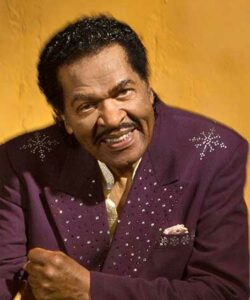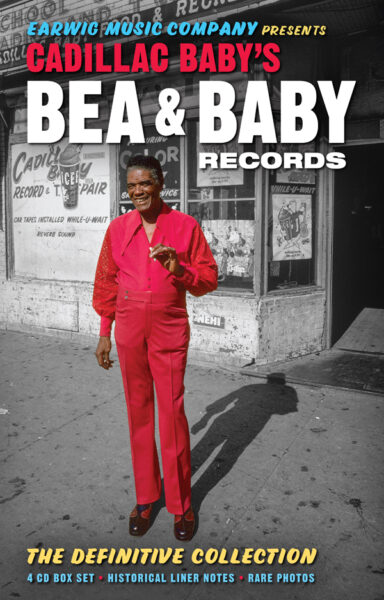Bobby Rush
Bobby Rush played guitar and harmonica on several tracks of David “Honeyboy” Edwards’ 2008 Earwig release, Roamin’ And Ramblin’.
The creator of a singular sound which he dubbed “folk-funk,” multi-instrumentalist Bobby Rush is among the most colorful characters on the contemporary chitlin circuit, honing a unique style which has brought together a cracked lyrical bent with elements of blues, soul, and funk.
Born Emmit Ellis, Jr. in Homer, LA, on November 10, 1940, he and his family relocated to Chicago in 1953, where he emerged on the West Side blues circuit of the 1960s, fronting bands which included such notable alumni as Luther Allison and Freddie King. However, as Rush began to develop his own individual sound, he opted to forgo the blues market in favor of targeting the chitlin circuit, which offered a more receptive audience for his increasingly bawdy material; he notched his first hit in 1971 with his Galaxy label single “Chicken Heads,” and later scored with “Bow-Legged Woman” for Jewel.
He appeared on a wide variety of labels as the decade progressed, culminating in the 1979 LP Rush Hour, produced by Kenny Gamble and Leon Huff for their Philadelphia International imprint. During the early ’80s, Rush signed with the LaJam label, where he remained for a number of years; there his work became increasingly funky and deranged, with records like 1984’s Gotta Have Money and 1985’s What’s Good for the Goose Is Good for the Gander often featuring material so suggestive he refused to re-create it live. During the mid-’90s, Rush moved to Waldoxy, heralding a return to a soul-blues sound on LPs including 1995’s One Monkey Don’t Stop No Show, 1997’s Lovin’ a Big Fat Woman, and 2000’s Hoochie Man.
In April 2001, his tour bus crashed, injuring several band members and killing one, Latisha Brown. Rush was hospitalized for a short time, then returned home to recuperate.
Rush returned to action in 2003 with the release of the Live From Ground Zero CD and DVD on his own label, Deep Rush, followed by Folkfunk, also on Deep Rush, in 2004. Rush released two albums in 2005, Hen Pecked and Night Fishin’. He has released several more albums in the ensuing decade and has gained much more reknown on the international blues scene.
-Written by Jason Ankeny, updated by Michael Frank








